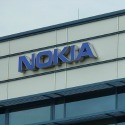
Nokia has blamed the impact of the coronavirus for a €200 million ($218 million) hit to first-quarter sales and lowered profit targets for the year amid the economic uncertainty the virus has generated in its main addressable markets.
The Finnish equipment maker appeared to miss analyst expectations as it recorded a 3% drop in net sales, to about €4.9 billion ($5.3 billion), compared with the year-earlier quarter.
Soon-to-depart CEO Rajeev Suri blamed the shortfall on supply chain disruption in China and cut Nokia's profit target after citing further risks in the second quarter. Suri is now guiding for an operating margin of about 9% for the full year, down from about 9.5% previously.
That target was last year slashed from 12-16% after Nokia acknowledged problems at its 5G business and began working on a turnaround.
Thanks partly to those efforts so far, Nokia's operating loss – according to International Financial Reporting Standards – narrowed to just €76 million ($83 million) in the first quarter, from €524 million ($570 million) a year earlier. Nokia also managed a small net profit, reporting earnings per share of €0.01, compared with a loss of €0.02 a year earlier.
Among other things, it is trying to phase out some of the expensive components it originally selected for its 5G equipment and has subsequently blamed for margin pressure. Around 17% of its 5G products now include more profitable chips, under its ReefShark label, up from 10% at the end of 2019. Nokia expects to reach 35% by the end of 2020 but says a full replacement will take another two and a half years.
Nevertheless, at the networks business, which accounts for about three quarters of Nokia's sales, the transition has already helped to buoy the gross margin, which rose to 30.4% from 26.9% a year earlier.
Suri, who in September will make way for Pekka Lundmark, the boss of energy group Fortnum, has been under pressure to show that Nokia is not losing market share in the all-important 5G sector as operators begin to make investments in the new network technology.
Outside China, where it has reportedly failed to win 5G radio contracts, it insists it is on course to maintain its market share this year at 27%, the same level it recorded at the end of 2019.
Nokia says it has continued to increase investments in 5G even though overall R&D spending has fallen, dropping to €736 million ($801 million) in the first quarter from €778 million ($847 million) a year earlier. "R&D absolute spend was down a bit because of cost measures we have been pushing through," says Kristian Pullola, Nokia's chief financial officer.
Want to know more about 5G? Check out our dedicated 5G content channel here on Light Reading.
The company is trying to cut €500 million ($544 million) in costs by the end of this year, compared with 2018, and slashed nearly 5,000 jobs last year, about 5% of the total. The cost-saving target was lowered from €700 million ($762 million) last year to safeguard 5G investment activity.
Pullola says margin growth shows the company is on track to realize its cost-saving targets. Profitability improvements, he tells Light Reading, also came from the strong performance of Nokia's standalone software business, where sales rose 13%, to €613 million ($667 million), and profits soared 41%, to €308 million ($335 million).
In constant currency terms, the sales decline of 3% at Nokia compares with a 2% drop last year and comes after rival Ericsson reported a 2% drop in first-quarter revenues – on a like-for-like basis – after growth of 7% a year earlier.
While the Swedish firm downplayed the impact of COVID-19, Nokia said revenues would have grown by nearly 2% were it not for the virus.
During a call with reporters, Suri blamed the €200 million ($218 million) revenue shortfall on factory closures in China and warned of potential delivery problems in the second quarter.
"Getting customer acceptances for new product deployments has been difficult in some cases due to physical factors such as on-site access being blocked due to the lockdown, and we do see this continuing further into Q2," he said. "We expect net sales to be pushed to future periods rather than lost."
In the meantime, the fast-growing enterprise segment could help to offset the pressure felt by the mainstream business, according to Suri. Although the enterprise division currently accounts for only 6% of group revenues, its sales rose a fifth in the first quarter, to about €311 million ($338 million).
Despite the fall in headline sales, Nokia's share price was up 2.5% in Helsinki at the time of writing and is slightly higher than it was at the end of 2019. It has lost 28% of its value in the last year.
The company's share price has been volatile amid strategic problems, the COVID-19 crisis and ongoing speculation that Nokia could be a takeover target. It was recently reported to have hired banking firm Citi to fend off a hostile takeover that could be worth as much as $17.4 billion.
Nokia has declined to comment on the speculation.
Related posts:
— Iain Morris, International Editor, Light Reading
About the Author(s)
You May Also Like











